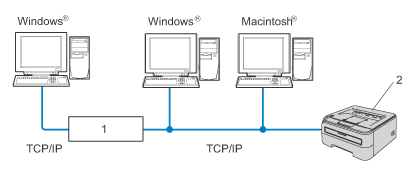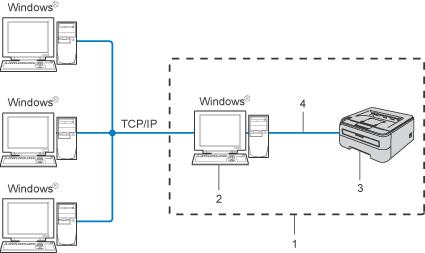



  |   |

| • | In a smaller network of 2 or 3 computers, we recommend the Peer-to-Peer printing method as it is easier to configure than the Network Shared printing method described on the following page. See Network Shared printing. |
| • | Each computer must use the TCP/IP Protocol. |
| • | The Brother printer needs to have an appropriate IP address configuration. |
| • | If you are using routers, the Gateway address must be configured on the computers and the Brother printer. |
| • | The Brother printer can also communicate with Macintosh®. (TCP/IP compatible operating systems) |

  |   |